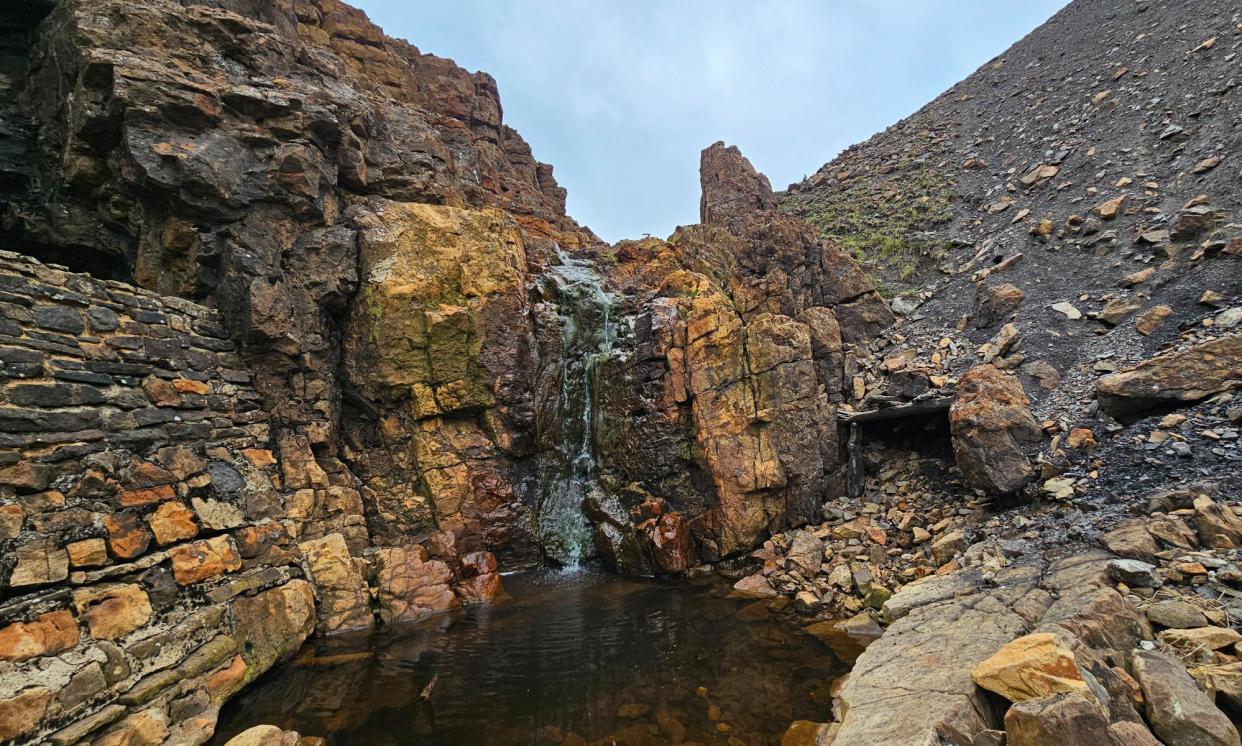Country diary: A day of shock and ore down in the ravine

The rocky ravine, with its bluffs and tumbled boulders, is more dry desert than a slice through the green North Pennines. Its stream, shrunk to a few languid pools, has become an orange-stained barranco that we pick our way along. This is the Nent River, and the last time I was here it was to walk – and crawl – deep into the passages of the abandoned lead mine.
Nenthead was a major centre of lead mining in the 18th and 19th centuries, and the area round the mines and Smelt Mill is heaped with substantial dumps of spoil, long studied for its minerals and fossils. The upheaval from the workings also revealed a complex geology. I’ve joined the earth sciences group of the Natural History Society of Northumbria for a walk led by the geologist Karl Egeland-Eriksen and Brenda Turnbull.
Winter spates brought down a mass of material and, with so little water in the burn, it’s possible to search the actual river bed. There are lumps of ore minerals dug from higher up the valley at the Smallcleugh Mine: there’s galena, the ore of lead, and sphalerite, known as “blackjack”, an ore of zinc. Visible in a limestone boulder is a fossilised brachiopod, Gigantoproductus, a sea creature that had two hard shells, not hinged like cockles and mussels but cupped inside each other. I pick up a chunk containing coral and am awed by the unfathomable timespan.
A scramble up the slope takes us to an outcrop of the Great Limestone formed more than 300m years ago and a geological feature throughout much of northern England. Fossil-rich beds of colonial coral – like the piece I found in the river – alternate with layers of stone. A wavy undulation is the finest exposure of the Chaetetes Band anywhere: layers of the sclerosponge Chaetetes depressus once formed thin lacy mats on the sea floor and its mesh is studded with shells and crinoids, their life position frozen in stone.
It’s the Great Limestone that also forms the Nent River waterfall. Today it’s just a trickle across slabs of rock, orange-stained from iron deposits. The pool beneath is punctuated by jagged rusty pipes, its depths both fascinating and forbidding like the altered landscape that surrounds it.
• Country diary is on Twitter/X at @gdncountrydiary
• Under the Changing Skies: The Best of the Guardian’s Country Diary, 2018-2024 (Guardian Faber) is published on 26 September; pre-order now at the guardianbookshop.com and get a 20% discount


